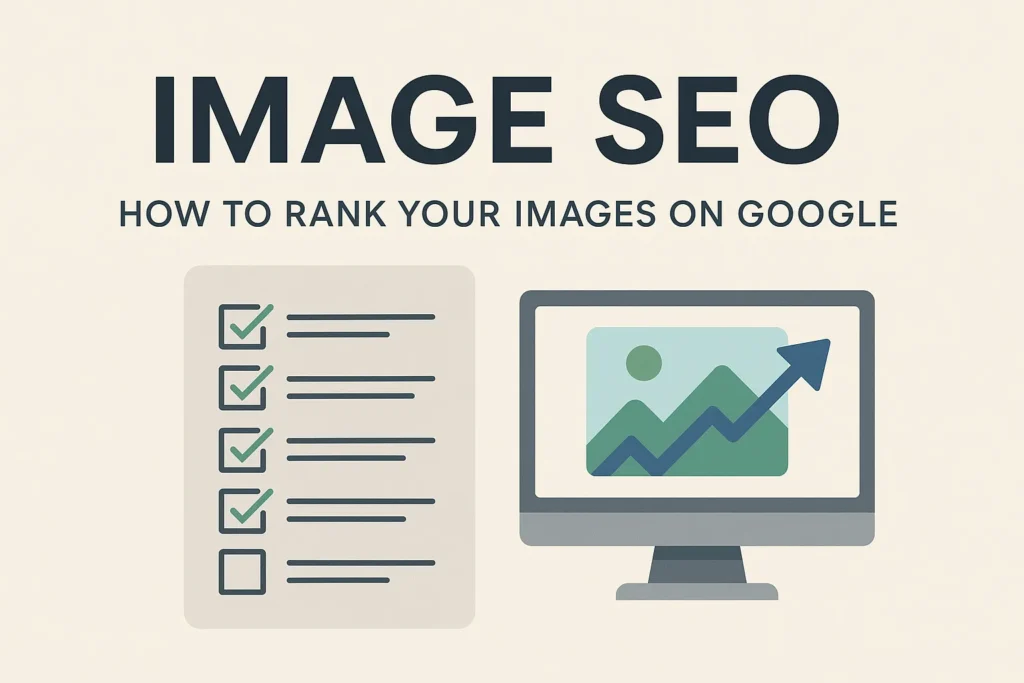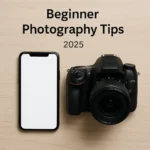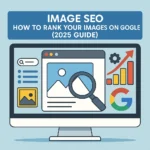
Image SEO – How to Rank Your Images on Google (2025 Guide)
If you’re uploading images to your website in 2025, you’re already halfway to standing out online. But if you’re not optimizing those images, you’re likely missing out on thousands of potential visitors—many of whom are finding content through Google Images, Discover, and even Google Lens.
I’ve learned this the hard way. When I first started blogging, I just threw in pretty pictures and never thought about how Google might “see” them. But once I got serious about Image SEO, I noticed a quiet but powerful change: my traffic started growing. Not from ads or social shares—but from images I had simply optimized the right way.
Let me walk you through how to make that happen for your own site in 2025.
Why Image SEO Matters More Than Ever
Images aren’t just for visual flair anymore—they’re content. In fact, Google now indexes images just like text. If your photo helps answer someone’s question or matches a popular search, Google wants to show it.
Here’s what optimizing your images can do:
- Help your content rank in Google Images and Discover
- Increase clicks from search results
- Boost page speed (if you use the right formats)
- Improve mobile experience and accessibility
- Get your site noticed through Google Lens
In short: your image could become your best traffic magnet.
How Google “Sees” Your Images
Google doesn’t look at your photo like a person would. It scans the file name, the alt text, the title, the image placement, and even surrounding content to figure out what it’s about.
To help Google understand your images, focus on:
- File name – Rename it to something like
cozy-coffee-shop-laptop-setup.webp - Alt text – A short sentence describing the image
- Captions – Optional, but they help with user context
- Structured data – If you’re dealing with products, recipes, or creative content
12 Simple But Powerful Image SEO Tips
Here are some of the most effective things I do now—many of which I learned through trial and error:
- Rename your image files before uploading. Don’t leave it as
IMG_2047.jpg. Use keywords naturally. - Use WebP format—it’s fast-loading and Google loves speed.
- Compress your images with tools like TinyPNG or Squoosh to avoid slowing your page down.
- Write descriptive alt text—keep it natural and helpful, not stuffed with keywords.
- Add image captions if it helps explain or support the content.
- Use responsive image tags so your pictures look great on any screen size.
- Host images on your own domain for better control and faster delivery.
- Use schema markup (like
ImageObject) for certain content types. - Submit an image sitemap if your site uses a lot of visuals.
- Place images near relevant text to help Google understand context.
- Avoid generic stock images—original photos perform better.
- Check your page speed regularly—images play a big role in how fast your site loads.
Choosing the Right Image Format in 2025
If you want your page to load fast and rank well, start using these formats:
- WebP – Ideal for blogs and SEO
- AVIF – Even smaller, but not supported by all browsers
- JPG – Still okay, but not as efficient
- PNG – Good for transparency, but large in size
I usually upload all my blog images in WebP now. It cuts load time almost in half compared to JPG, especially for mobile users.
Free Tools I Use for Image Optimization
You don’t need to spend anything to improve your image SEO. Here are some free tools I rely on:
- TinyPNG – Best for quick compression
- Squoosh – Made by Google; easy to use
- Photopea – Great for editing and cropping
- Canva – Useful for making social-friendly visuals with SEO-friendly dimensions
- ImageOptim – Mac-only, but handy for bulk optimization
Real Case Example: A Quick Win from Image SEO
A friend of mine runs a home decor blog. She wasn’t getting much traffic from Google at first, even though her photos were beautiful. Once she renamed her images, switched them all to WebP, and added proper alt text, something clicked.
One post that used to get about 100 views a week suddenly climbed to over 400—mostly from Google Images.
And she didn’t even write new content. Just cleaned up her image SEO.
Mobile Optimization Is Non-Negotiable
Most people browsing your site will be on a phone. That’s why your images must:
- Load fast
- Resize for different screens
- Not mess up your layout
Use the srcset and sizes attributes in your image tags so different devices load the right image size.
I once checked my blog on a friend’s phone and realized half the images were cut off. Fixing that with responsive tags helped reduce bounce rates and improved time-on-site.
Tracking Image SEO Performance
Here’s how I keep an eye on what’s working:
- Google Search Console → Go to “Performance” and filter by “Image”
- Track clicks and impressions for specific images
- Use UTM parameters if sharing images on social platforms
- In Google Analytics, set up goals or look at behavior flow to see how image pages perform
Common Myths I Fell For (So You Don’t Have To)
- Myth: “Just add lots of keywords in alt text.”
Truth: That’s spammy. Keep it natural. - Myth: “Stock photos are fine.”
Truth: They rarely rank. Google sees them everywhere. - Myth: “Alt text is only for SEO.”
Truth: It’s also for accessibility and users with screen readers. - Myth: “Bigger resolution = better SEO.”
Truth: Oversized images slow your page down. Balance is key.
Structured Data: A Bonus Boost
If you’re showcasing recipes, creative work, or products, using schema markup like ImageObject helps Google understand your image better.
Example (don’t worry, your dev or plugin can handle this):
jsonCopyEdit{
"@context": "https://schema.org",
"@type": "ImageObject",
"contentUrl": "https://yourdomain.com/images/sunrise.webp",
"description": "Beautiful sunrise in the Himalayas",
"author": {
"@type": "Person",
"name": "Your Name"
}
}
Quick Checklist Before Publishing an Image
✅ File renamed with keywords
✅ Saved in WebP format
✅ Alt text added naturally
✅ File compressed (under 300 KB ideally)
✅ Looks great on mobile
✅ Placed near relevant content
Final Thoughts
Image SEO in 2025 isn’t about tricking Google—it’s about helping it understand your content. When you make your images clean, fast, and easy to read (for both users and search engines), everyone wins.
If you’ve already got a bunch of images on your site, don’t worry—you don’t need to re-do everything overnight. Start small. Pick your most important pages, apply what you’ve learned, and watch the results.
It’s the quiet kind of SEO that builds up over time. But once it clicks, your images start pulling their weight—bringing in traffic, enhancing your content, and making your site shine in search.

